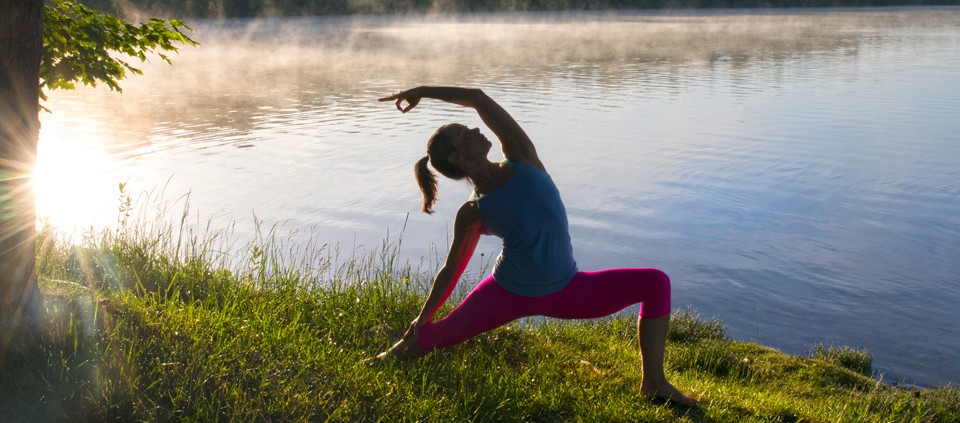Taking the Mystery Out of Yoga Practice

Ah, yoga! Just about every time we step on the mat, we feel better afterward. Yet establishing a solid practice can be elusive, especially when you’re just starting out—there are so many details to remember. Kripalu Yoga teacher trainer Michelle Dalbec has some accessible tips to help you get the most out of your on-the-mat experience. Whether you’re new to yoga or a seasoned practitioner, these overarching principles from the Kripalu Yoga methodology can help you set the stage for cultivating a nourishing practice rooted in empowered self-awareness.
Build the posture from the ground up.
Building the posture from the ground up ensures that you establish a strong foundation. In standing poses such as Mountain, start with your feet, rooting down to rise up, extending through the crown of your head. Amp up your Plank pose by pressing down what’s on the ground—the hands and the toes. Notice how solid your yogic architecture is when you apply this principle.
Hug in to radiate out.
This cue creates both stability and resilience so that you’re active and engaged in the pose, but not grasping or straining. This tip from Michelle can help your upper body stay strong in Warrior II: Plug your arm bones into your shoulder sockets (hugging in) while reaching out with your fingertips (radiating out).
A posture should be steady and sweet.
Steadiness begins with breath connection. And the sweet spot is the place where you’re exerting energy but not overly taxing your body. Yoga, as Michelle notes, is a living inquiry, and each posture offers an opportunity to pay attention to our entire being. Are you pushing your hips up so hard in Bridge pose that you’re forgetting to breathe? Notice where you can soften to create spaciousness. In Bridge, lengthening the tailbone toward the knees protects the low back and opens the front of the body.
Your body is your best teacher.
Your body will tell you when you’re in too deep or staying too long in a posture. Tune in to the messages it sends you in the form of sensations. Dynamic effort is necessary to remain connected to a pose, and discomfort often arises as a result, but you should never feel pain. Let’s examine High Lunge/Warrior I as an example: The feet, the hips, and legs are working hard, but not so much that you feel strain in the front knee. As with every pose, investigate what’s happening in the present moment and make a skillful choice based on the feedback from within.
© Kripalu Center for Yoga & Health. All rights reserved. To request permission to reprint, please e-mail editor@kripalu.org.